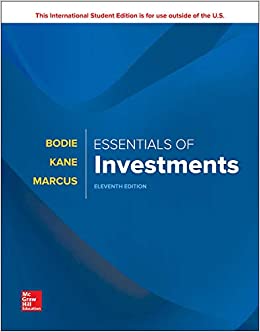Question
1. One thing lenders sometimes require when loaning money to a small corporation is an assignment of the ordinary shares as collateral on the loan.
- 1. One thing lenders sometimes require when loaning money to a small corporation is an assignment of the ordinary shares as collateral on the loan. Then, if the business fails to repay its loan, the ownership of the share certificates can be transferred directly to the lender. Why might a lender want such an assignment? What advantage of the corporate form of organization comes into play here?
2. Sometimes when businesses are critically delinquent on their tax liabilities, the tax authority comes in and literally seizes the business by chasing all of the employees out of the building and changing the locks. What does this tell you about the importance of taxes relative to our discussion of cash flow? Why might a business owner want to avoid such an occurrence?
3. Interpret, in words, what cash flow from assets represents by discussing operating cash flow, changes in net working capital, and additions to fixed assets.
4. Assume you are the financial officer of a major firm. The CEO of the firm has just stated that she wishes to reduce the firm's investment in current assets since those assets provide little, if any, return to the firm. How would you respond to this statement?
5. The managers of a firm wish to expand the firm's operations and are trying to determine the amount of debt financing the firm should obtain versus the amount of equity financing that should be raised. The managers have asked you to explain the effects that both of these forms of financing would have on the cash flows of the firm. Write a short response to this request.
6. Assume that your firm has a positive cash balance and that the cash balance is increasing each year. Why then is it important to analyze a statement of cash flows?
7. Suppose you calculated the following ratio for a firm: The sum of the compensation paid to the owners, directors, and managers, divided by total sales. Which class of financial ratios should this be included in and why? Who might be interested in such a ratio?
8. List and interpret five liquidity ratios.
9. You need to analyze a firm's performance in relation to its peers. You can do this either by comparing the firms' statements of financial position and income statements or by comparing the firms' ratios. If you only had time to use one means of comparison which method would you use and why?
10. What value can the price-sales ratio provide to financial managers that the price-earnings ratio cannot?
11. Write a sentence explaining why present values decrease as the discount rate increases
12. Explain what compounding is and the relationship between compound interest earned and the number of years over which an investment is compounded.
13. At an interest rate of 10 per cent and using the Rule of 72, how long will it take to double the value of a lump sum invested today? How long will it take after that until the account grows to four times the initial investment? Given the power of compounding, shouldnt it take less time for the money to double the second time?
14. What lesson does the future value formula provide for young workers who are looking ahead to retiring some day?
15. There are three factors that affect the future value of an annuity. Explain what these three factors are and discuss how an increase in each will impact the future value of the annuity.
16. Define what is meant by interest rate risk. Assume you are the manager of a R100 million portfolio of corporate bonds and you believe interest rates will fall. What adjustments should you make to your portfolio based on your beliefs?
17. The discussion of asset pricing in the text suggests that an investor will be indifferent between two bonds which have equal yields to maturity as long as they have equivalent default risk. Can you think of any real-world factors which might make a given investor prefer one of these bonds over the other?
18. Inflation has remained low for the past three years but you have come to the conclusion that trend is ending and inflation will increase significantly over the next 18 months. Assume you have reached this conclusion prior to other investors reaching the same conclusion. What adjustments should you make to your bond portfolio in light of your conclusions?
19. What are the components of the required rate of return on a share? Briefly explain each component.
20. How does the net present value (NPV) decision rule relate to the primary goal of financial management, which is creating wealth for shareholders?
22. Whatarethetwoprimarylessonslearnedfromcapitalmarkethistory?Whatevidenceistheretosuggesttheselessonsarecorrect?23.YouwanttoinvestinanindexfundwhichdirectlycorrelatestotheoverallSouthAfricanstockmarket.Howcanyoudetermineifthemarketriskpremiumyouareexpectingtoearnisreasonableforthelong-term?
Step by Step Solution
There are 3 Steps involved in it
Step: 1

Get Instant Access to Expert-Tailored Solutions
See step-by-step solutions with expert insights and AI powered tools for academic success
Step: 2

Step: 3

Ace Your Homework with AI
Get the answers you need in no time with our AI-driven, step-by-step assistance
Get Started


